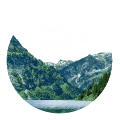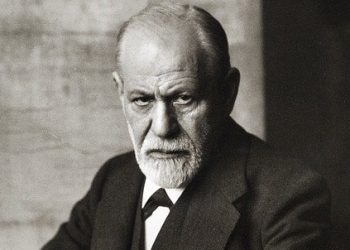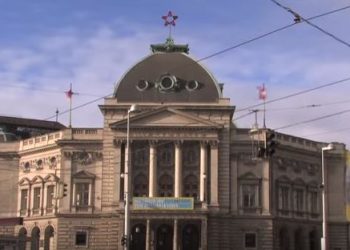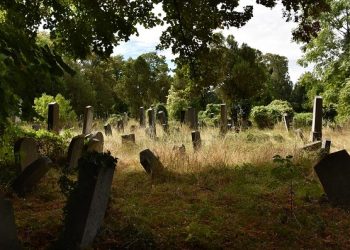Ernst Fuchs was born in 1930 in the 16th district of Vienna. He was born to a Jewish father who was forced to flee Vienna with the rise of the Nazis. Young Ernst was baptized into Christianity at the age of 12 and was thus saved from the extermination camps. Due to his “race,” he was denied the opportunity to study in regular schools and had to be homeschooled. From a young age, his artistic talent was evident, and his teacher decided to include painting and sculpture in the home curriculum.
In 1945, Fuchs enrolled at the Vienna Academy of Fine Arts, and from there, he began his journey to the pinnacle of international art. In his studies, he met great artists like Arik Brauer, Rudolf Hausner, and Wolfgang Hutter, who would later become his partners in founding the Vienna School of Fantastic Realism. Over the years, Fuchs became a household name in the world of painting, sculpture, and architecture.
Fuchs’s childhood events greatly influenced his works, and the combination of Judaism and Christianity is very evident in his famous paintings and sculptures. He spent his life in various countries, including Israel, and his works were exhibited in art exhibitions all over the world.
In 1972, Fuchs purchased an impressive villa, a true Art Nouveau gem, which had stood abandoned for many years. This villa was built by the legendary architect Otto Wagner in the 14th district of Vienna (called Hütteldorf). After two years of renovation and restoration work, he turned the place into his private studio. Fuchs designed the entire interior of the building himself in a style that is second to none – designed tapestries, extraordinary furniture, chandeliers, and of course, many sculptures and pictures of his own creation.

Although the artist passed away in 2015, the villa had already become the Ernst Fuchs Museum in 1988. This is one of the less conventional places in Vienna and definitely an interesting experience for anyone who loves, even a little, architecture, sculpture, and painting.
To this day, the place is preserved in its original style, and visitors to the museum can be impressed by the paintings, sculptures, and special furniture that adorn the villa. The impressive gallery displays original paintings and works of great value, such as: “The Sign of Moses,” the watercolor cycle of Ernst, and many more.
Whether from the outside or the inside, the Ernst Fuchs Museum is something you don’t see every day.
The museum complex has a nice café for the convenience of visitors.
Essential Information for Visiting the Ernst Fuchs Villa Museum
Opening Hours:
Tuesday to Sunday from 10:00 AM to 4:00 PM. Closed on Christmas and New Year’s.
Entrance Fee:
- Adult – €14
- Child and Senior – €9
- Free entry for holders of the Lower Austria Card (NÖ Card)
How to get to the Ernst Fuchs Villa by public transport:
Take the green U4 subway line to the last stop, called Hütteldorf. Outside the station, there are bus platforms. Take bus line 52A or 52B towards Campingplatz Wien-West 1 and get off at the Jägerwaldsiedlung stop. From there, it’s a 2-minute walk to the villa.
Address: Hüttelbergstraße 26, 1140 Wien
Map:


















